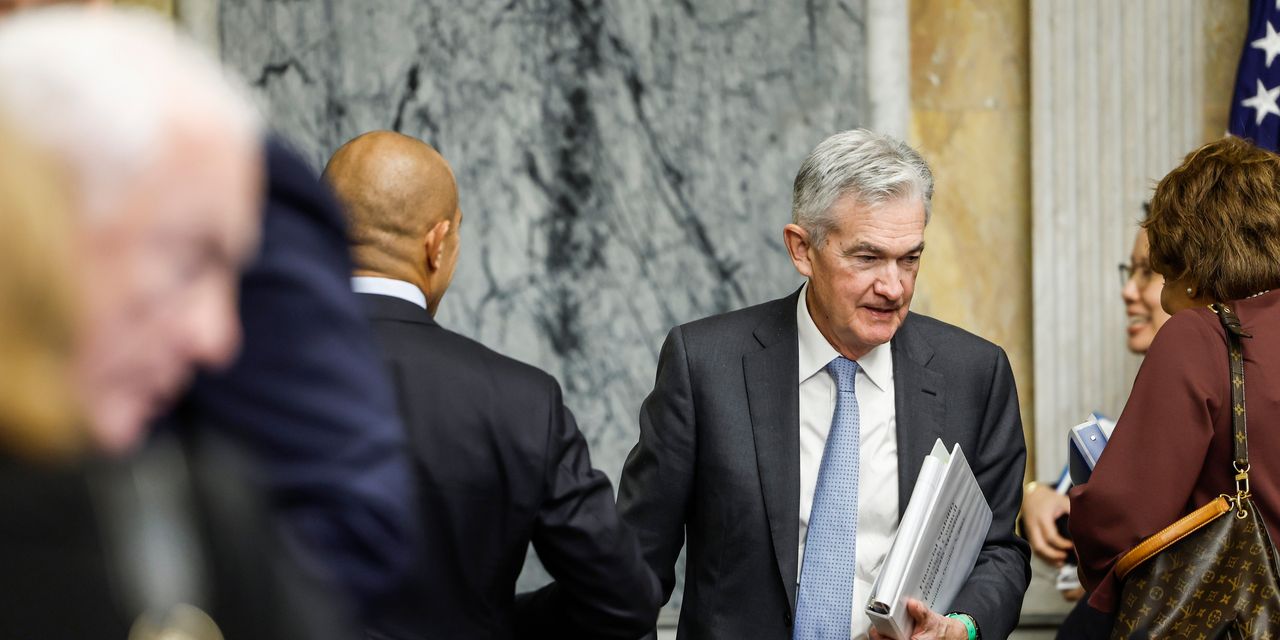Calling inflation “unacceptably high,” Federal Reserve leaders saw their strategy of fighting price pressures aggressively as less risky to the economy than doing too little, minutes of the bank’s last meeting show.
The Fed approved another jumbo-size increase in U.S.interest rates at its Sept. 21-22 meeting. It also signaled plans for another pair of big increases before year end in a surprise to Wall Street
DJIA,
The minutes of the Fed’s meeting underscore that top officials were disappointed and worried about persistently high inflation.
“A sizable portion of the economic activity has yet to display much response,” the Fed minutes said. “Inflation had not yet responded appreciably to a policy tightening.”
While some senior Fed officials also worried the bank could go too far and damage the economy, the majority appeared to believe it was vital for the central bank to squelch inflation, even if that meant keeping rates high for a prolonged period.
“Many participants emphasized that the cost of taking too little action to bring down inflation likely outweighed the cost of taking too much action,” the minutes said.
The Fed predicts the economy will eventually slow as rates rise, but it noted the labor market remains extremely tight.
Fed officials also expressed concern that oil prices could rise again, supply chains would not heal as quickly as expected and that rising wages could exacerbate inflation.
“Inflation was declining more slowly than [Fed officials] had been anticipating,” the minutes said.
The internal Fed debate has also playing out publicly since the last meeting.
Some senior officials such as Atlanta Federal Reserve President Raphael Bostic hope the bank will make enough progress in its fight against inflation to “pause” rate hikes at the end of this year.
Fed critics contend the bank is going to go too far and could plunge the economy into a second recession in four years. A pause would allow the Fed to see how much its prior rate hikes have succeeded in lowering the rate of inflation, they say.
Others such as Minneapolis Fed chief Neel Kashkari and Cleveland Fed boss Loretta Mester say the Fed needs to take whatever steps necessary to quell inflation as soon as possible.
Failing to do so, they contend, would make it even harder to get prices back under control if Americans come to view high inflation as the norm. That would do even more damage to the economy in the long run.
Since March the Fed has lifted a key short-term interest rate from near zero to an upper end of 3.25%. And the central bank has telegraphed plans to raise the so-called fed funds rate to as high as 4.75% by next year.
Rising U.S. interest rates has done little so far to douse inflation.
The rate of inflation, using the Fed’s preferred PCE price index, rose at a yearly rate of 6.2% as of August. That’s a long way off from the Fed’s forecast for inflation to fall to 2.8% in 2023 and 2.3% by 2024.
The higher cost of borrowing has only chilled a few parts of the economy, most notable housing.
The rate on a 30-year mortgage has surged above 7% to a 16-year high from less than 3% one year ago. The result has been a slowdown in home buying and construction and softer sales of home furnishings.
Most consumer and business loans are influenced by the fed funds rate.
